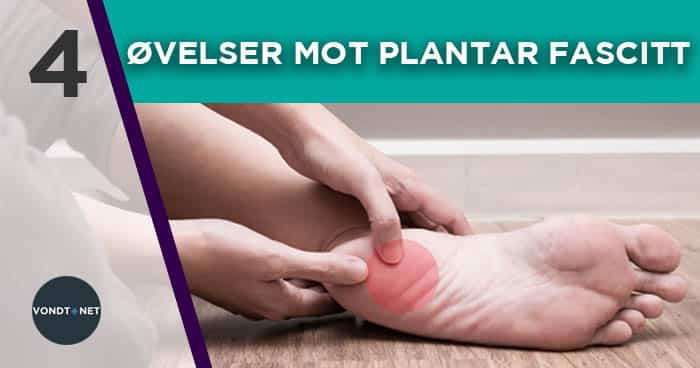
Inflammation of the ankle
Inflammation of the ankle can occur due to a number of causes. Typical symptoms of inflammation in the ankle are local swelling, reddish irritated skin and pain when pressing. An inflammation (mild inflammatory response) is a normal natural response when soft tissues, muscles or tendons become irritated or damaged.
When tissue is damaged or irritated, the body will try and increase blood circulation to the area - this leads to pain, local swelling, heat development, reddish skin and pressure soreness.
The swelling in the area can also lead to nerve compression, which we can see, among other things tarsal tunnel syndrome where the tibial nerve is pinched.
These symptoms will vary in intensity depending on the injury or irritation of the tissue. It is important to distinguish between inflammation (inflammation) and infection (bacterial or viral infection). Please take contact on our Facebook page if you have any questions or comments.
Scroll below for to watch two great training videos with exercises which can help you with ankle inflammation and associated symptoms.
VIDEO: 6 Exercises against Plantar Fascitis and Ankle Pain
The plantar fascia is the tendon plate beneath the foot. By providing improved function and strength in this we can directly relieve the ankles. These six exercises help strengthen your arch, but also your ankle stability. Click below to see the exercises.
Join our family and subscribe to our YouTube channel for free exercise tips, exercise programs and health knowledge. Welcome!
VIDEO: 10 Strength Exercises for the Hips (and Ankles)
Your hips are among the strongest shock absorbers you have. Many people forget the importance of training their hips to relieve their knees, feet and aching ankles. Stronger hip muscles mean improved shock absorption when walking, jogging, running or simply standing straight up and down.
Here are ten strength training exercises that can help you strengthen your hips and relieve your ankles. Click below.
Did you enjoy the videos? If you took advantage of them, we would really appreciate you subscribing to our YouTube channel and giving us a thumbs up on social media. It means a lot to us. Thank you very much!
Causes of inflammation of the ankle
As mentioned, inflammation or inflammation is a natural response from the immune system to repair an injury or irritation. This may occur due to overuse (without sufficient musculature to perform the task) or due to minor injuries. Here are some diagnoses that can cause inflammation or inflammation of the ankle:
Achilles bursitis (mucosal inflammation on the back of the ankle)
Arthritis (Arthritis)
Osteoarthritis (the pain depends on which joints are affected)
Broken ankle
Fat Pad Inflammation (typically causes pain in the fat pad under the heel)
Heel spurs (causes pain in the underside of the foot blade, usually just in front of the heel)
Arterial injury or tearing (inflammation reaction depends on which tendon is damaged)
Plantar fascite (causes pain in the foot leaf, along the plantar fascia from the protrusion of the heel)
rheumatism (the pain depends on which joints are affected)
Tarsal tunnel syndrome aka Tarsal tunnel syndrome (usually causes quite intense pain on the inside of the foot, heel)
Prevalence: Who is affected by inflammation of the ankle?
Absolutely everyone can be affected by an inflammation in the ankle - as long as the activity or load exceeds what the soft tissue or muscles can withstand.
Those who increase their training too quickly, especially in jogging, sports, weightlifting and especially those with a high repetitive load on the ankle and foot are most exposed - especially if the majority of the load is on a hard surface. Malpositions in the feet (overpronation and flatfoot) can also be a contributing cause of developing an inflammatory reaction in the ankle.
Inflammation of the ankle can make even normal walking almost impossible. If an inflammation occurs then keep in mind that in most cases it is self-inflicted (a lot of walking on hard surfaces with a lack of supportive muscle training, for example?), And that you are smart to listen to what the body is trying to tell you . If you do not listen to the pain signals, the condition can be chronically damaged.
Symptoms of inflammation of the ankle
Pain and symptoms will depend on the extent to which the ankle has an inflammatory reaction. We remind you again that an inflammation and an infection are two completely different things - if you get a severe inflammatory reaction with heat development, fever and pus in the area, then you have an infection, but we will go into more detail in another article.
Typical symptoms of inflammation include:
- Local swelling
Reddish, irritated skin
- Painful when pressing / touching
Diagnosis of inflammation of the ankle
A clinical examination will be based on history and an examination. This will show reduced movement in the affected area and local tenderness.
You will not normally need a further imaging examination - but in certain cases it may be relevant with an imaging examination to check whether an injury is the cause of the swelling or blood tests.
Imaging diagnostic examination of inflammation in the ankle (X-ray, MRI, CT or ultrasound)
An X-ray can rule out any fracture damage. One MRI examination can show if there is any damage to tendons or structures in the area. Ultrasound can examine whether there is tendon damage - it can also see if there is fluid accumulation in the area.
Treatment of inflammation of the ankle
The main purpose of treating inflammation in the ankle is to remove any cause of the inflammation and then let the ankle heal itself. As mentioned earlier, an inflammation is a completely natural repair process where the body increases blood circulation to the area to ensure faster healing - unfortunately it is so that sometimes the body can do a slightly good job and it may then be necessary with icing, anti-inflammatory laser and possible use of anti-inflammatory drugs (we remind you that overuse of NSAIDS can lead to a reduced repair in the area). Cold treatment can provide pain relief for sore joints and muscles, also in the ankle. Blue. Biofreeze is a popular natural product. One should always try conservative treatment for a long time before resorting to invasive procedures (surgery and surgery), but in some cases this is the only way out.
Direct conservative measures can be:
- Foot care (foot care and physical therapy can provide pain relief)
- Rest (take a break from what caused the injury)
- Compression sock
Self-help for ankle pain
Some of the products that can help with ankle pain and problems are hallux valgus support og compression socks. The former works by making the load from the foot more accurate - which in turn leads to less failure of the ankle.
Compression socks work in that they increase blood circulation in the lower leg - which in turn results in faster healing and better recovery.
RELATED PRODUCT / SELF-HELP: - Compression sock
Anyone with ankle pain and problems may benefit from compression support. Compression socks can contribute to increased blood circulation and healing in those affected by reduced function of the ankles and feet. Read more about this sock by clicking on the image below.
Click on the image above to read more about the compression socks.
- Nedising / cryotherapy
- Sports taping / kinesio taping
- Insole (this can lead to a more correct load on the foot and foot)
Exercises and stretching
Exercises for inflammation in the ankle
One should try to cut out too much weight-bearing exercise if one is afflicted with inflammation in the ankle. Replace jogging with swimming, elliptical machine or exercise bike. Also, make sure that you stretch your foot and train your feet lightly as shown this article.
Next page: 4 Exercises against Plantar Fascitt
Click above to proceed to the next page.
Asked questions about inflammation of the ankle
Can one get inflammation in the ankle after a fracture?
Yes, it is very common to swell and get an inflammatory process in the area where the fracture has been. If fractures are healed and healed in a normal way, one would also expect the swelling to decrease. After an ankle fracture or tendon injury, it is advisable to follow the RICE principle included icing for the best possible and fastest healing.
 Follow Vondt.net on YOUTUBE
Follow Vondt.net on YOUTUBE
(Follow and comment if you want us to make a video with specific exercises or elaborations for exactly YOUR issues)
 Follow Vondt.net on FACEBOOK
Follow Vondt.net on FACEBOOK
(We try to respond to all messages and questions within 24-48 hours. We can also help you interpret MRI responses and the like.)






Has pain at a point under the foot, slightly below the toes. The pain propagates to the ankle, the outside. Not swollen and red, but very painful. Coming suddenly.
Hi Bodil,
There can be several things - among other things tarsal tunnel syndrome. Do you recognize yourself in the description of this syndrome? It can also be due to malfunction in the muscles and joints inside the foot.
Regards.
Nicolay v / vondt.net
Hi! Got inflammation in the left Achilles a year ago (after a short visit to the doctor), after probably too much jogging on hard ground. After that I have hardly jogged, but the pain and stiffness in my foot has not subsided. This summer it has increased so I am swollen and red around the joint and the rest of the foot, so that it is uncomfortable to wear shoes and so that I can not move my foot normally. The last two weeks I have also been stiff and somewhat swollen in the left knee and eventually under the arms and in the neck. Can inflammation spread, and what have I done wrong, since I get worse when I do not put much strain on my foot?
Hi Jennie,
First of all, this seems - due to the duration of the problem, even at rest - that this is a tendon injury or even partial tearing. We suggest a clinical examination by a modern chiropractor or physiotherapist to get more information about your pain picture. It may also be relevant with an MRI examination to give a correct diagnosis (due to a long-term problem).
No, inflammation can not spread in the way you describe there. But that an injury in the Achilles gives pain in the knee on the same side is not uncommon on the other hand - due to the fact that the Achilles has a shock-absorbing effect. In case of Achilles injury, you will lose a lot of this cushioning and thus the underside of the foot and knee, as well as the hip, must do more of the work. Naturally, this can lead to congestion and pain over time.
We recommend the use of compression socks (click here to read more) to increase blood circulation to the injured area of the leg and Achilles.